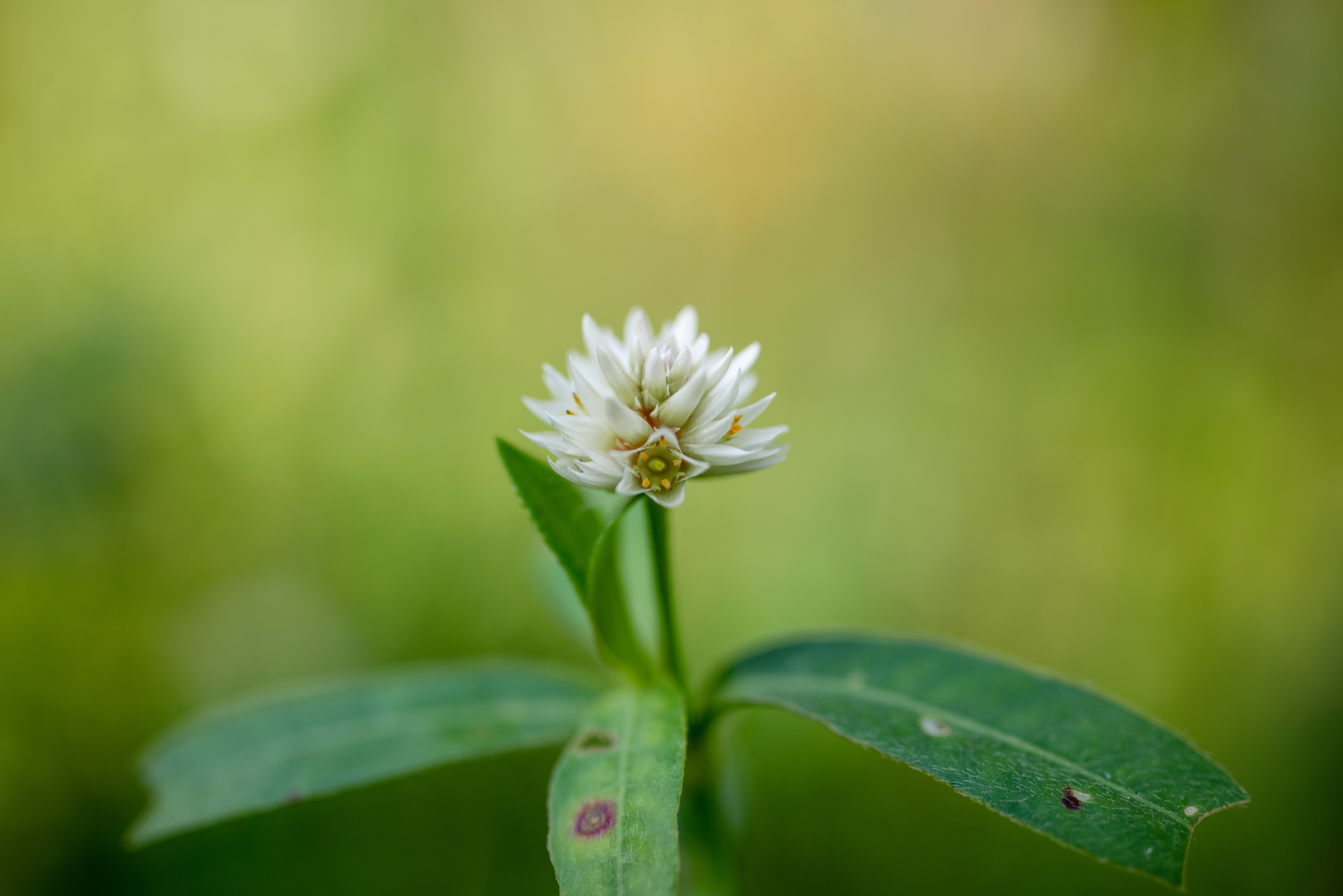Alligator weed
(Alternanthera philoxeroides)

Description
Alternanthera philoxeroides, commonly referred to as alligator weed, is a native species to the temperate regions of South America, which includes Argentina, Brazil, Paraguay and Uruguay. Argentina alone hosts around 27 species that fall within the range of the genus Alternanthera. Its geographic range once covered only the Parana River region of South America, but it has since expanded, having been introduced to over 30 countries, such as the United States, Japan, China, Australia, New Zealand and many more. This invasive species is believed to have been accidentally introduced to these non-native regions through sediments trapped by, or attached to, tanks and cargo of ships travelling from South America to these various areas. Alternanthera philoxeroides can thrive in both dry and aquatic environments and is characterized by whitish, papery flowers along its short stalks, irregular, or sprawling hollow stems, and simple and opposite leaf pattern sprouting from its nodes. The species is dioecious. It is also considered a herbaceous plant due to its short-lived shoot system. It produces horizontal stems, otherwise known as stolons, that can sprout up to 10 metres (33 ft) in length and thanks to its hollow stems, floats easily. This results in large clusters of stem amassing and create dense mats along the surface. The plant flowers from December to April and usually grows around 13 millimetres (1⁄2 in) in diameter and tend to be papery and ball-shaped. The weed's intricate root system can either allow them to hang free in the water to absorb nutrients or directly penetrate the soil/sediment and pull their nutrients from below. Alternanthera philoxeroides is considered a major threat to ecosystems because of the adverse effects it poses on both aquatic and terrestrial environments, as well as the negative influence it has on society. The species features on the list of invasive alien species of Union Concern since 2017. This means that import and trade of this species is forbidden in the whole of the European Union. This invasive plant depends solely on vegetative means to reproduce and disperse itself in the area it has invaded and established its roots. In its native geographic range, the species spreads to through means of producing viable seeds; however, it has been observed within its non-native ranges that it rarely produces viable seeds.
Taxonomic tree:







